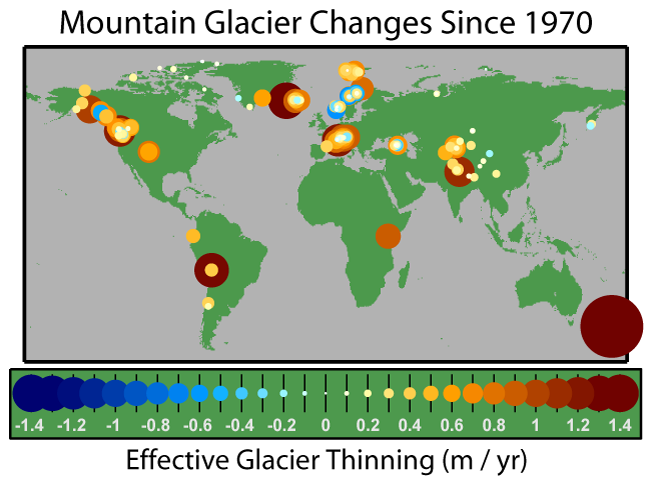Fájl:Glacier Mass Balance Map.png
Glacier_Mass_Balance_Map.png (650 × 477 képpont, fájlméret: 75 KB, MIME-típus: image/png)
Fájltörténet
Kattints egy időpontra, hogy a fájl akkori állapotát láthasd.
| Dátum/idő | Bélyegkép | Felbontás | Feltöltő | Megjegyzés | |
|---|---|---|---|---|---|
| aktuális | 2016. október 2., 17:56 |  | 650 × 477 (75 KB) | Cmdrjameson | Compressed with pngout. Reduced by 33kB (30% decrease). |
| 2006. április 10., 08:48 |  | 650 × 477 (108 KB) | Pflatau | == Summary == The effective rate of change in glacier thickness, also known as the glaciological mass balance, is a measure of the average change in a glacier's thickness after correcting for changes in density associated with the compaction o |
Fájlhasználat
Az alábbi lap használja ezt a fájlt:
Globális fájlhasználat
A következő wikik használják ezt a fájlt:
- Használata itt: ar.wikipedia.org
- Használata itt: cs.wikipedia.org
- Használata itt: de.wikipedia.org
- Használata itt: en.wikipedia.org
- User:Dragons flight/Images
- Holocene glacial retreat
- Glacier mass balance
- Retreat of glaciers since 1850
- Talk:Retreat of glaciers since 1850/Archive 2
- Wikipedia:Reference desk/Archives/Science/2006 September 26
- Portal:Climate change/Selected panorama
- Portal:Climate change/Selected panorama/2
- User:Ctello2/sandbox
- Használata itt: es.wikipedia.org
- Használata itt: eu.wikipedia.org
- Használata itt: fi.wikipedia.org
- Használata itt: fr.wikipedia.org
- Használata itt: gl.wikipedia.org
- Használata itt: gu.wikipedia.org
- Használata itt: hi.wikipedia.org
- Használata itt: hr.wikipedia.org
- Használata itt: hy.wikipedia.org
- Használata itt: id.wikipedia.org
- Használata itt: it.wikipedia.org
- Használata itt: ja.wikipedia.org
- Használata itt: nl.wikipedia.org
- Használata itt: pl.wikipedia.org
- Használata itt: ru.wikipedia.org
- Használata itt: sh.wikipedia.org
- Használata itt: sr.wikipedia.org
- Használata itt: sw.wikipedia.org
- Használata itt: ta.wikipedia.org
- Használata itt: tt.wikipedia.org
- Használata itt: vi.wikipedia.org
- Használata itt: zh.wikipedia.org



